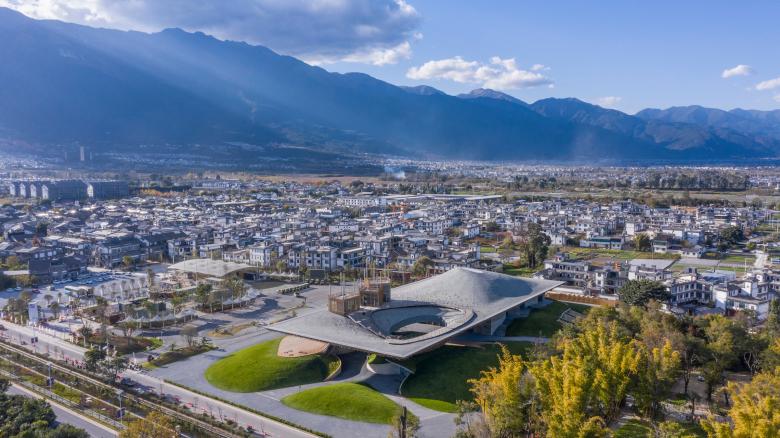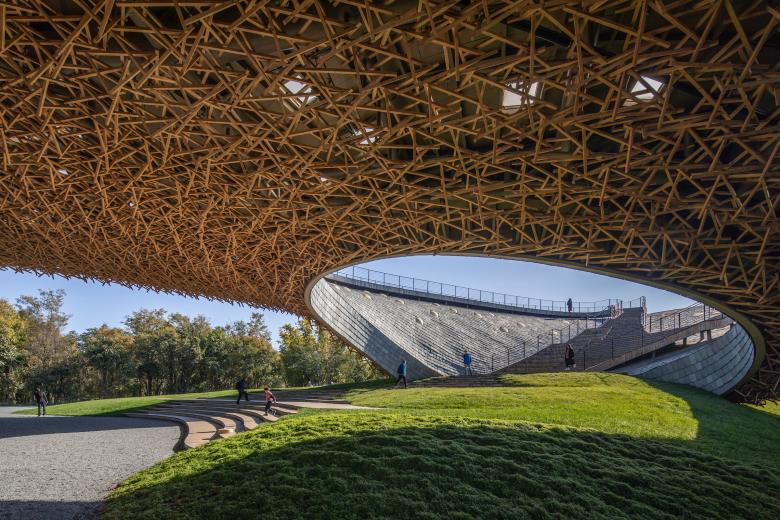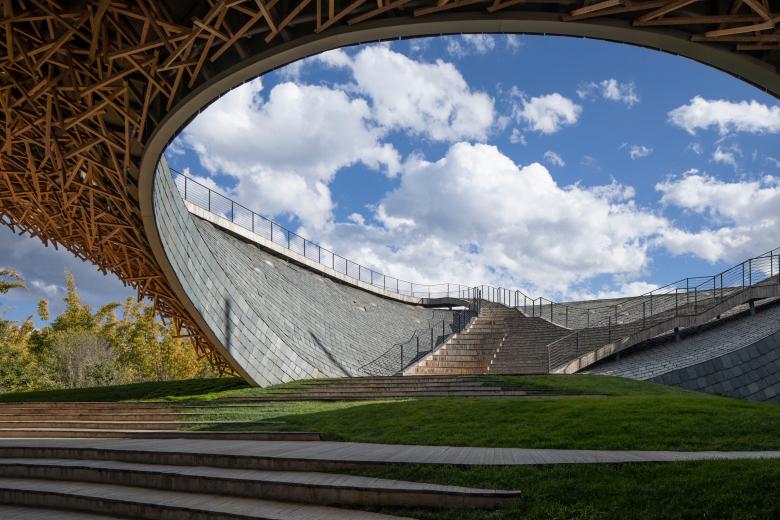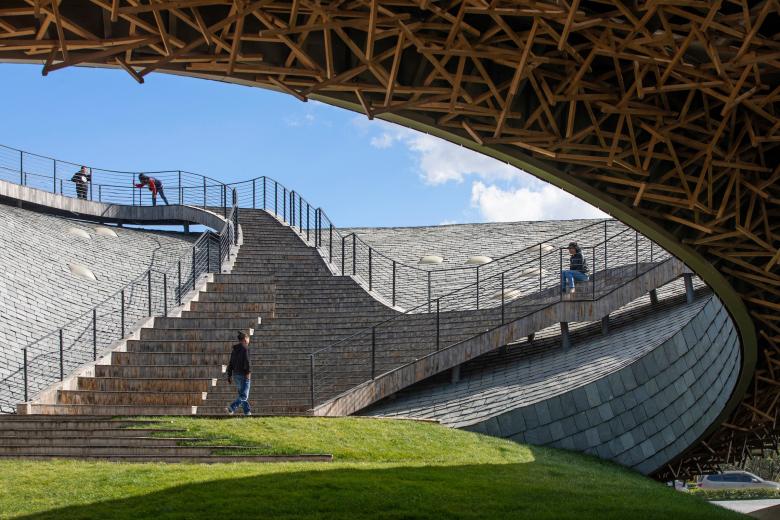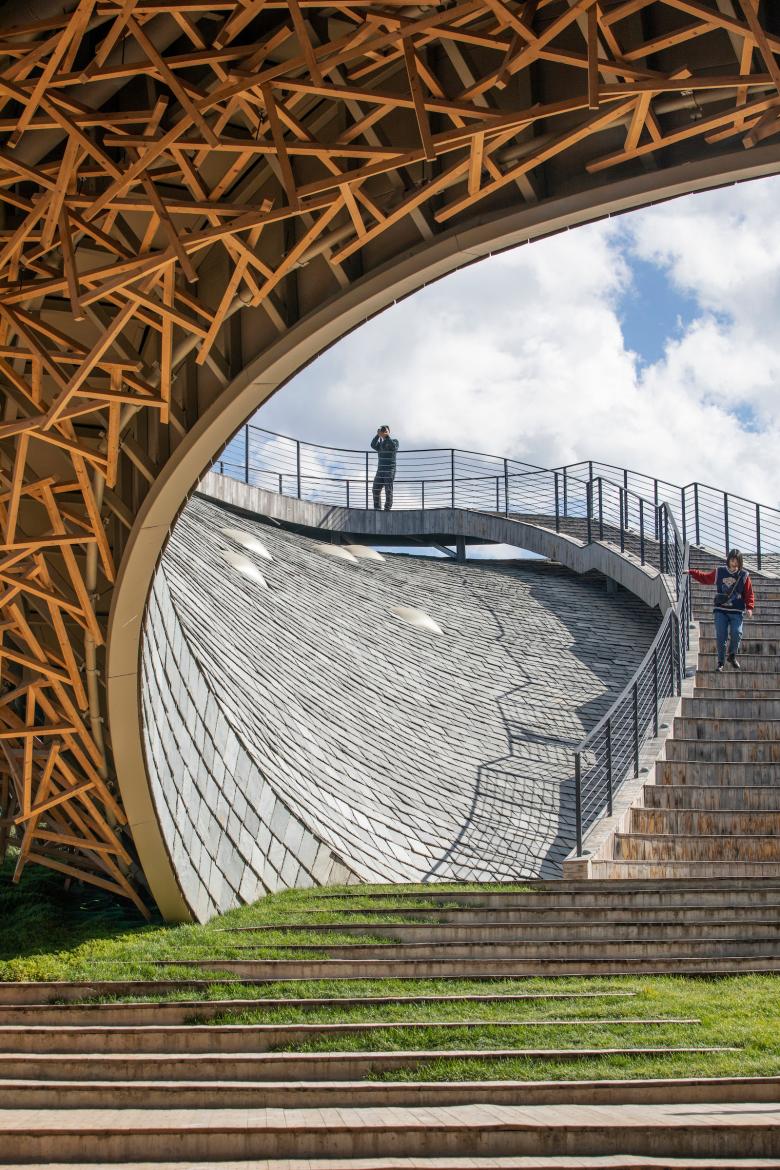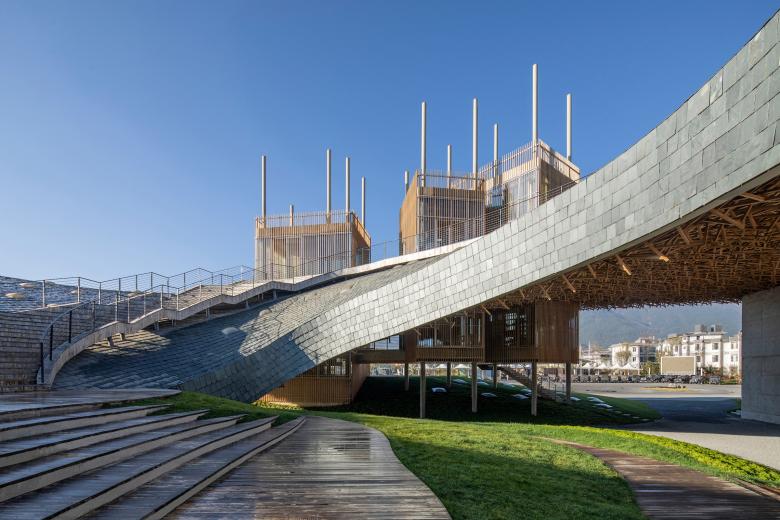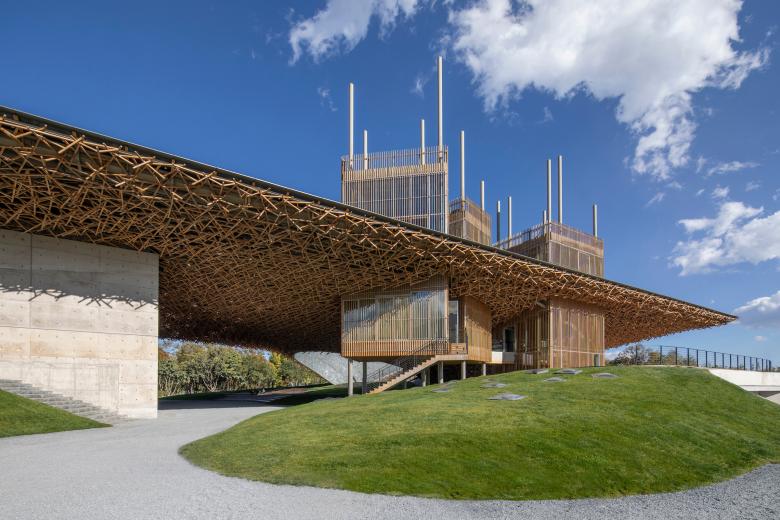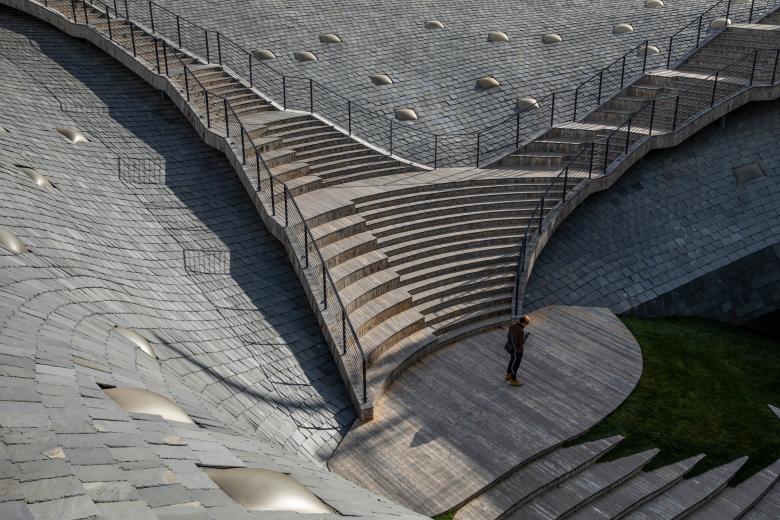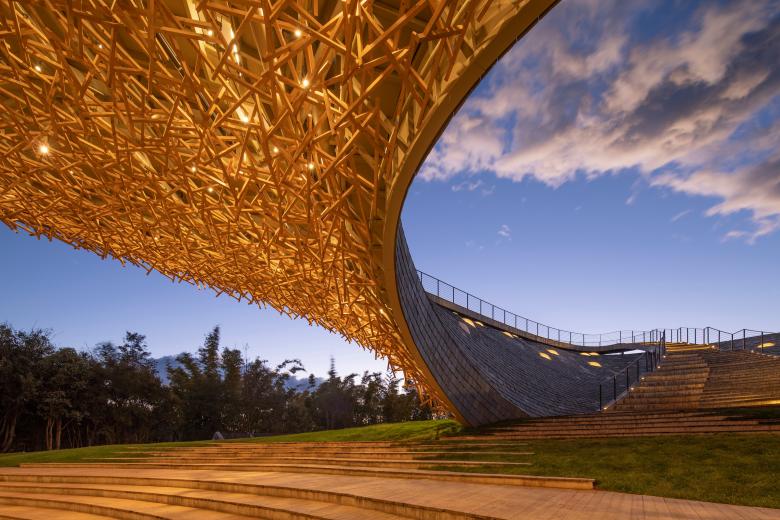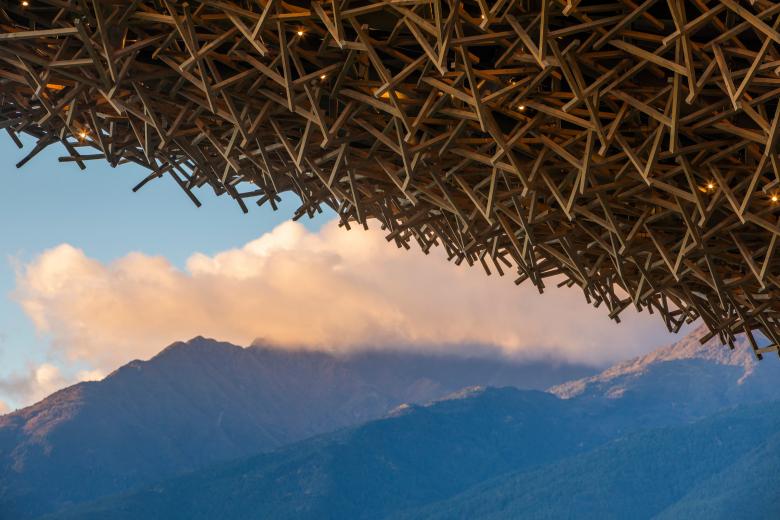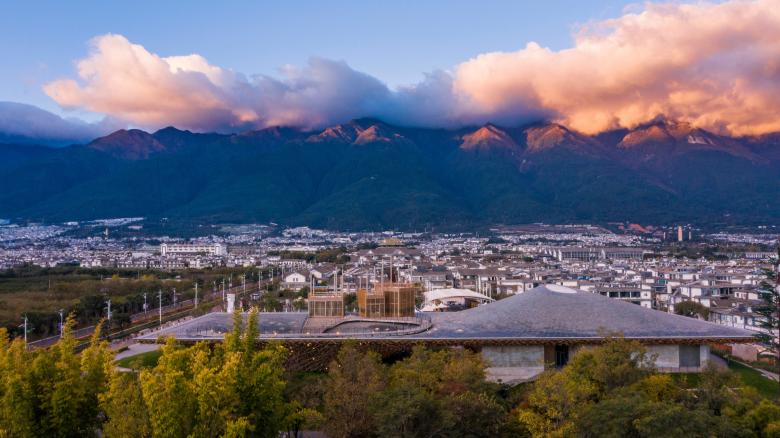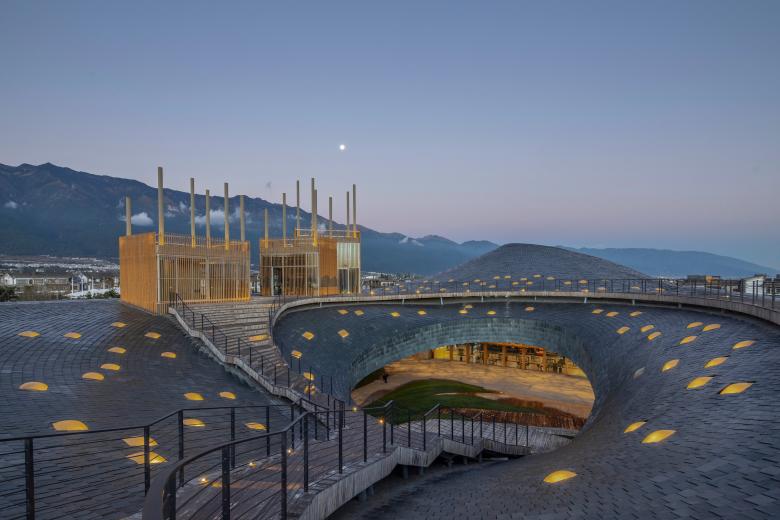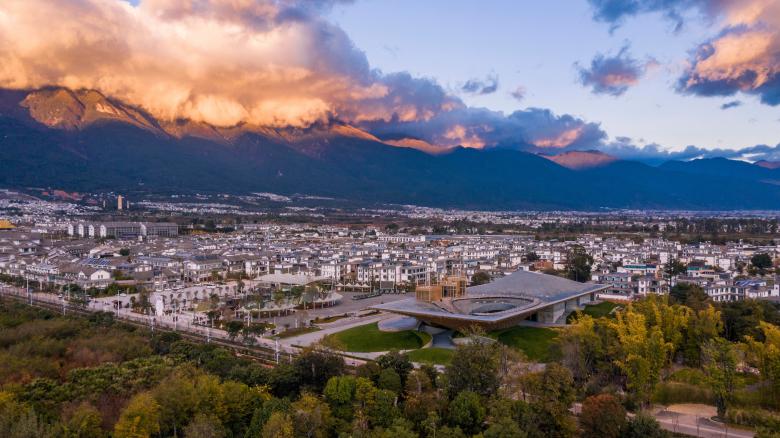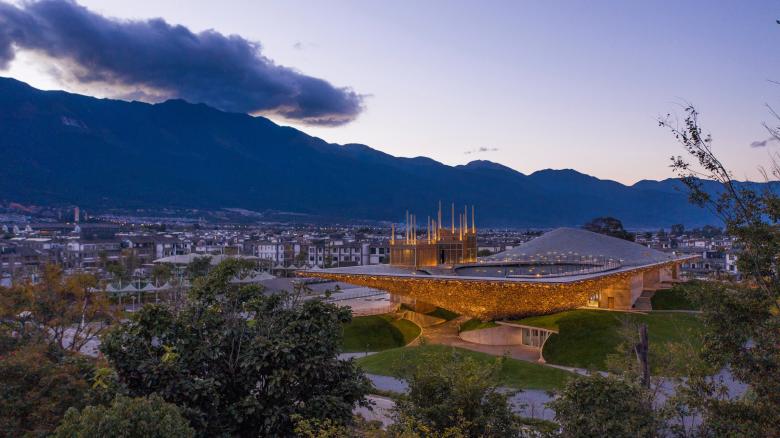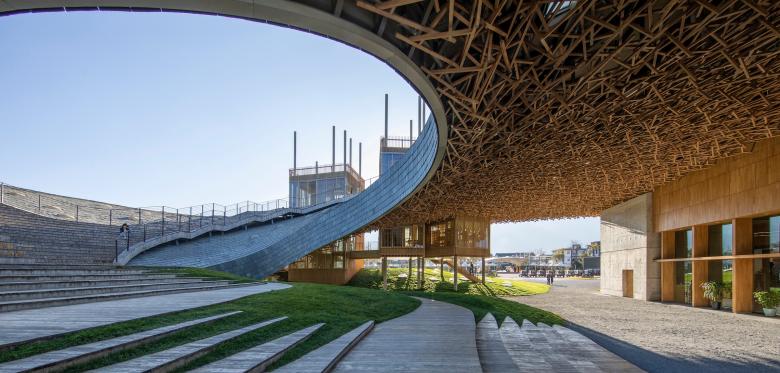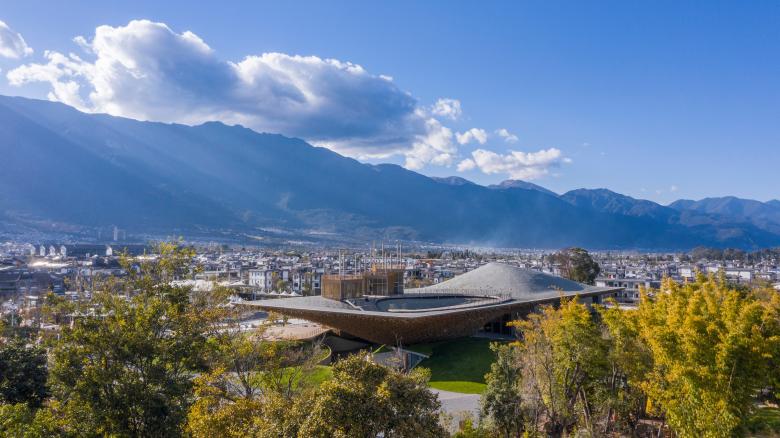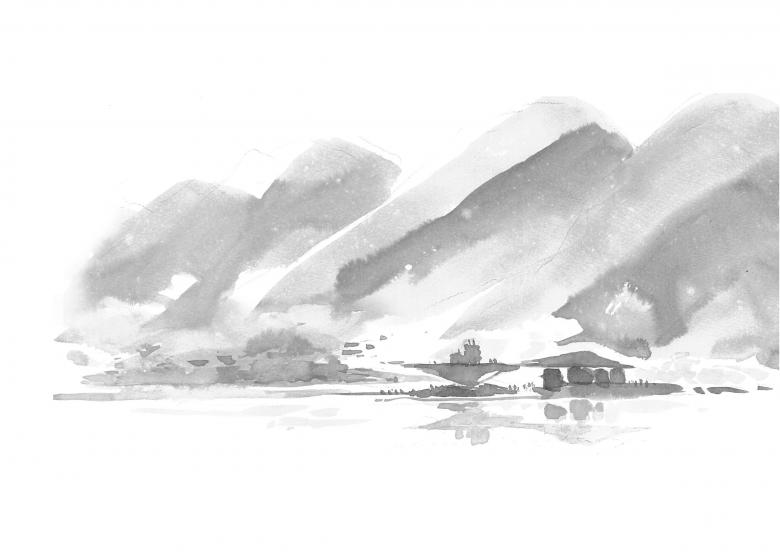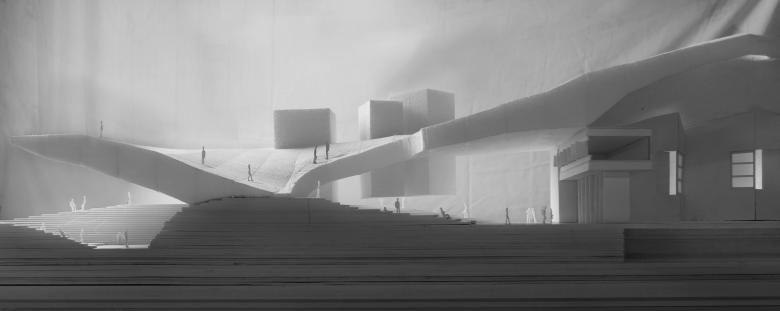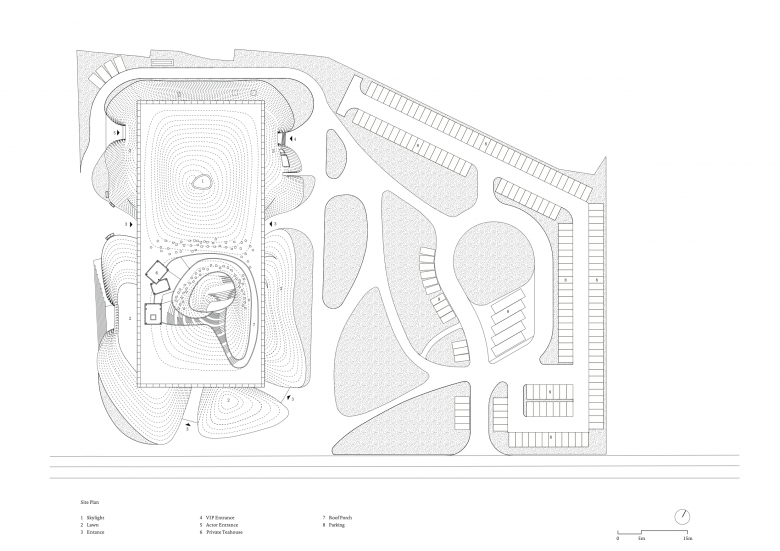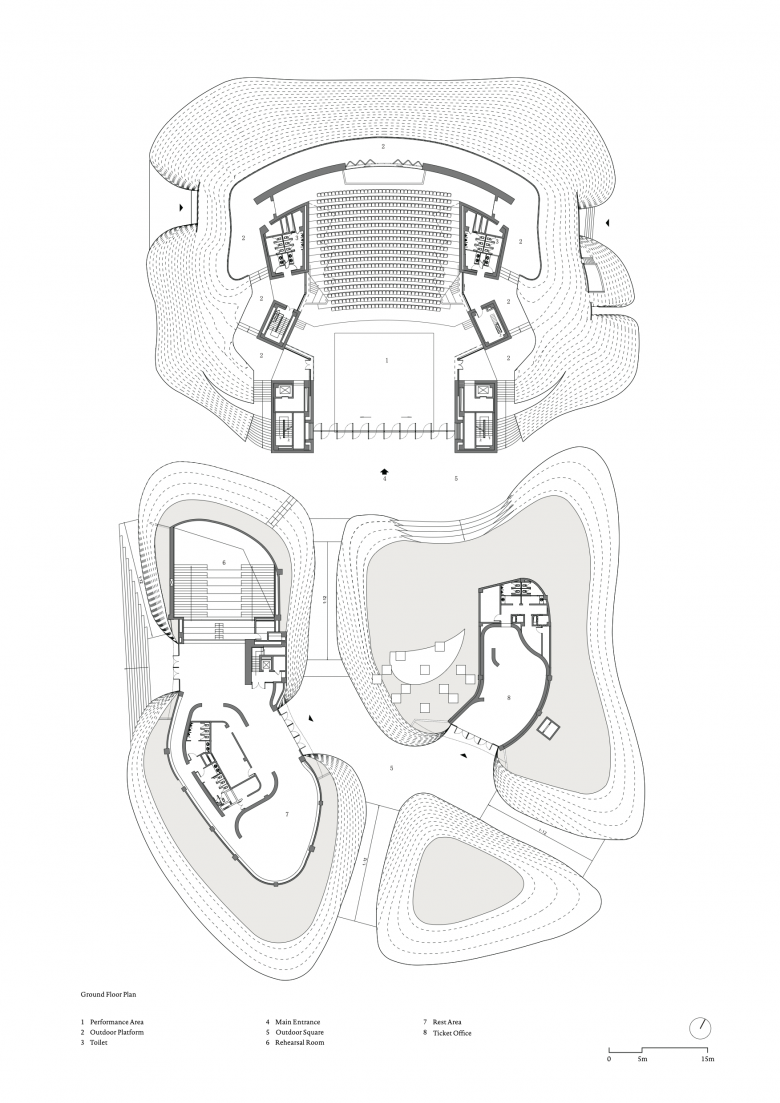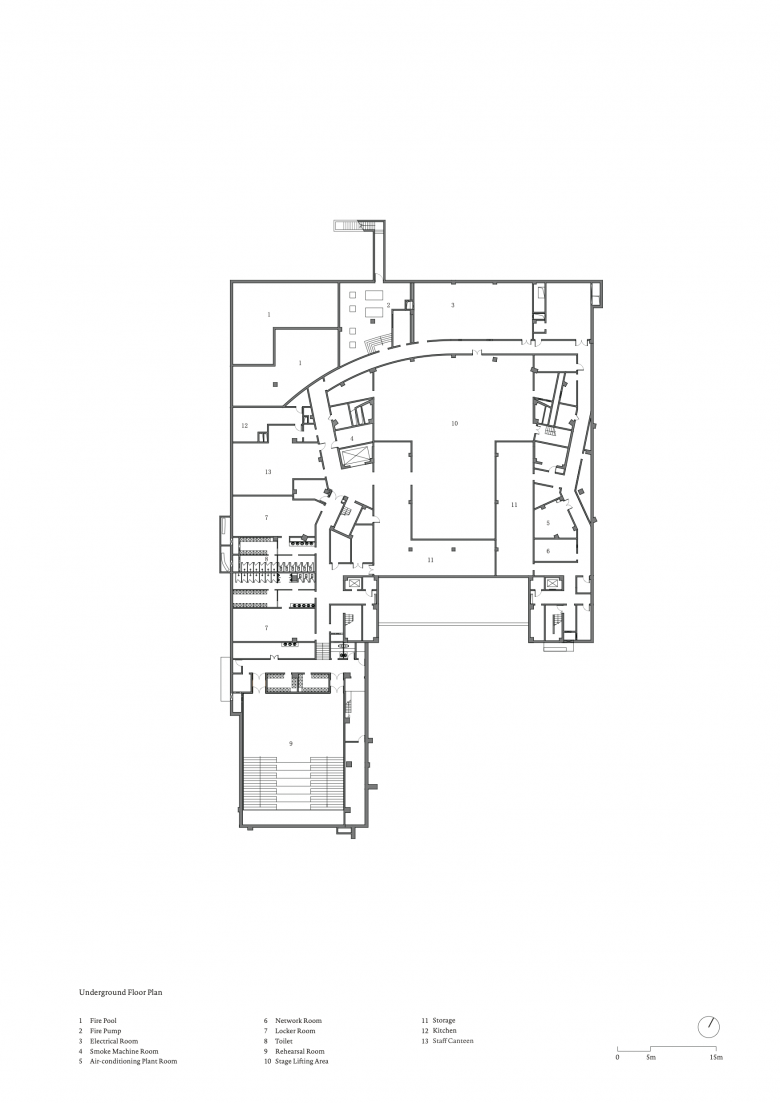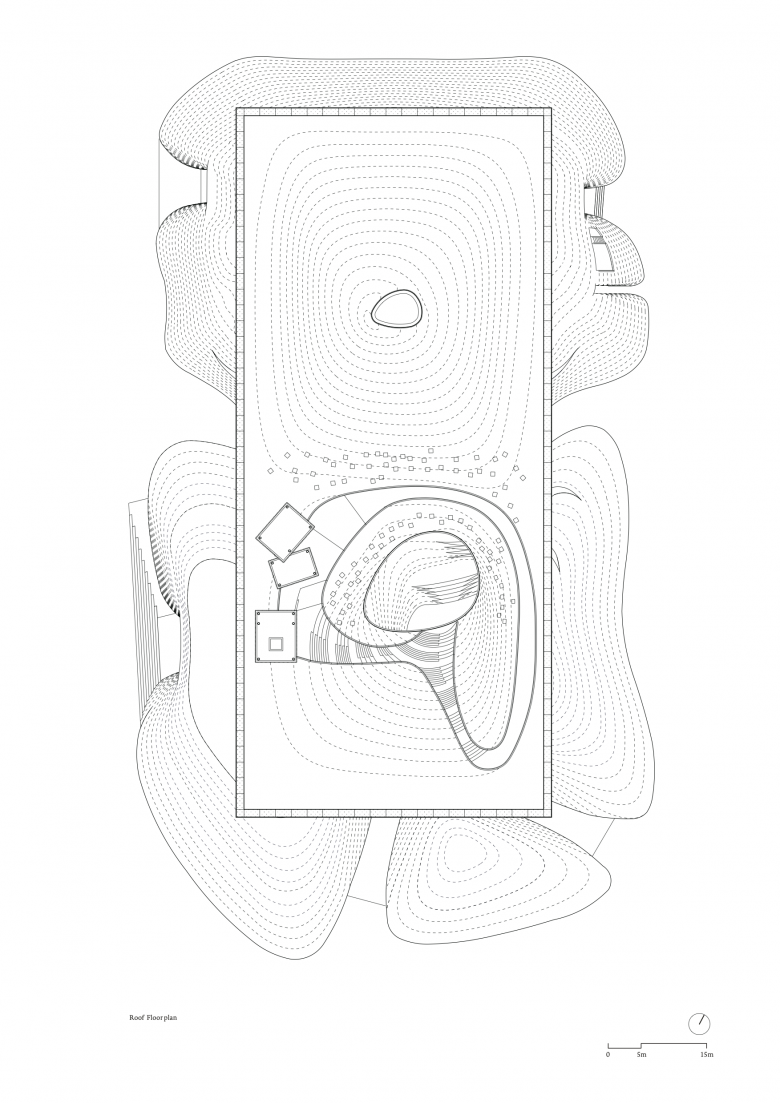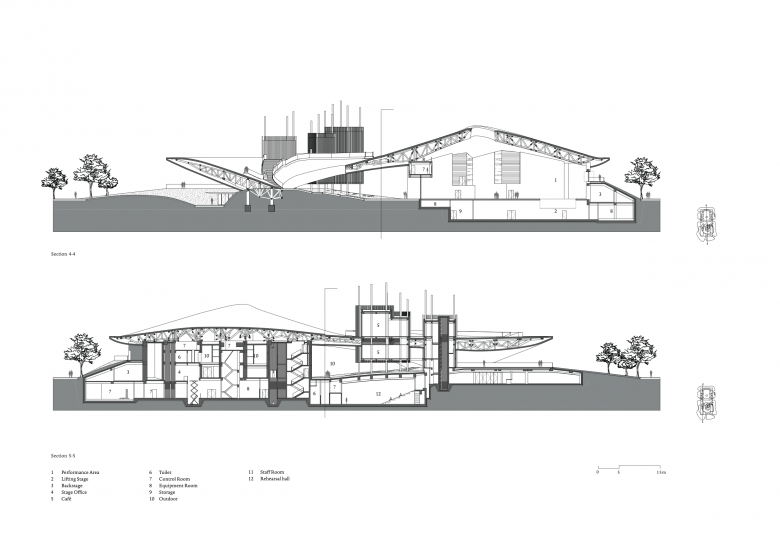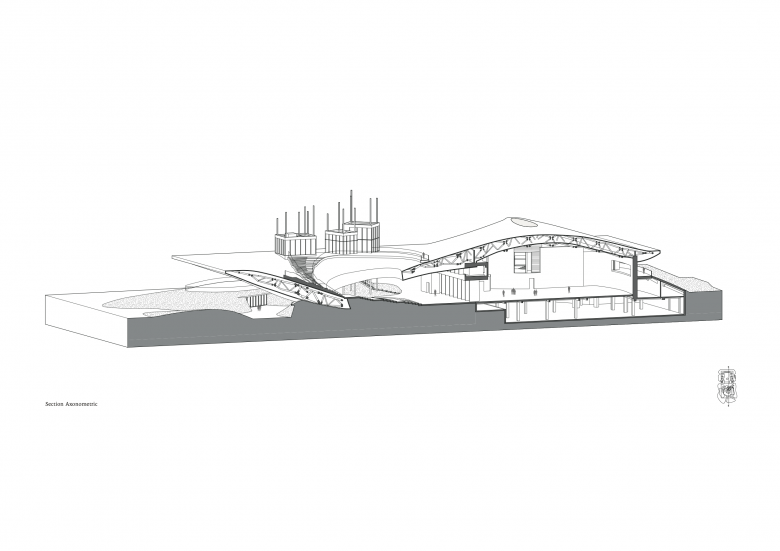Yangliping Performing Arts Center
Dali
- Architecten
- Studio Zhu-Pei
- Locatie
- Dali
- Jaar
- 2020
- Klant
- Dali Yang Liping Grand Theatre Co. LTD
- Team
- Zhu Pei (Design Principal), Edwin Lam (Lead Designer), Shuhei Nakamura (Lead Designer), Virginia Melnyk (Project in Charge), You Changchen, Han Mo, He Fan, Liu Ling, Wu Zhigang, Gary Poon, Ke Jun, Wang Peng, Wang Zheng, Ding Xinyue, Feng Chaoying, Chen Yida, Han Yi, Lin Wendi, Du Yao
- Architecture, Interior and Landscape Design
- Studio Zhu-Pei
- Theater
- dUCKS scéno, Creative Solution Integration LTD.
- Structure
- Professor Fu Xueyi, Master of National Engineering Survey and Design
- MEP
- CCDI
- Facade
- Shenzhen Dadi Facade Technology CO., LTD.
- Acoustic
- China IPPR International Engineering CO., LTD.
Situated between the Cang mountain chain, rising 4,000 meters in height, and 40 kilometer-long Lake Erhai, the city of Dali was a significant stop on the ancient tea and horse road, and is now an important tourism destination. The old town has largely been preserved and still has some remains of the historic city wall and gate towers.
Inspired by the powerful surrounding landscape, Zhu Pei searched for landscape-related references to solve the architectonic challenges for the Performing Arts Center. A widely cantilevered rectangular roof spans across a built landscape of free-flowing indoor and outdoor spaces, some of which can be combined as an interacting spatial system. As with mountains and valleys, the strong shape of the roof reflects the more organic landscape below and points to the old Chinese principle of yin and yang, where two opposites combine together to form a whole. Formally expressed as organic-shaped hills, the partly sunken spaces transform into a natural garden landscape, promising a high experiential quality that extends inside to the public theatre.
Gerelateerde projecten
Magazine
-
WENG’s Factory / Co-Working Space
3 days ago
-
Reusing the Olympic Roof
1 week ago
-
The Boulevards of Los Angeles
1 week ago
